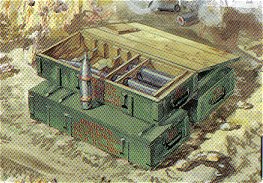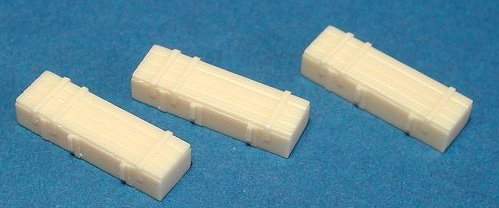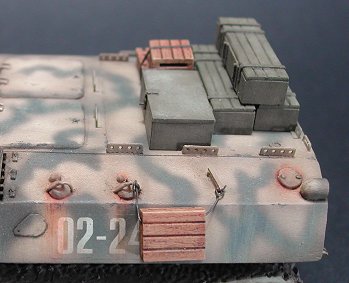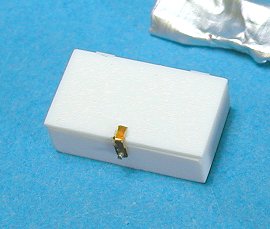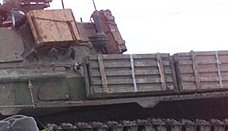| This short article
outlines some very simple methods of making your own
vehicle stowage. The focus is on stowage boxes -
containing items such as ammunition, tools and general
crew equipment. The tools and materials required are
cheap and readily available and the methods will easily
be within the scope of most modellers. Tools and materials
Various selections of plastic strip are the most important material. For some types of stowage, wire and spare photoetched bits are also useful.
Tools are pretty standard: I use a scalpel and various grades of wet and dry paper along with an assortment of glues. Occasionally I need to use a micro drill bit. And that's pretty much all that's needed. Usually I'll use a fresh scalpel blade to ensure it's as sharp as possible for the more delicate cutting operations. As with all types of modelling, good references are important, as often the real items have a distinct style and appearance. A few good photos are usually enough, although I have occasionally been able to borrow 1/35 scale equivalents from other modellers to help with details and dimensions. Ammo boxes I'll illustrate these with an example - Post war, Russian boxes for 122mm artillery rounds.
SKIF, a Ukrainian model company, market a 1/35 scale set that I used as a basis for my small scale equivalents (the box art for these is shown above). I scaled the basic dimensions down to 1/72 then set to work. If no dimensions are readily available, it’s sometimes possible to estimate them based on other items within a photo. Although not a completely accurate method, sometimes it's the only choice available.
The basic shape is just a section of thick plastic strip. Smaller strips were used to detail it, including the lid and strengthening strips around the sides. Even the thinnest strip I had looked slightly overscale, so once I’d fixed these to the main body (with superglue) I thinned them down with a small file. Resin casting techniques are out of the scope of this article, but being able to make copies is often extremely useful. This is especially the case for dioramas or for certain types of vehicles such as artillery tractors that can carry many containers at a time. I cast copies of the 122mm ammo box as I wanted several of them stowed on an MT-LB. Due to the simplistic shape, I was able to make a simple one part mould and I imagine that most stowage boxes could be copied in this way.
Here are the final items on the model.
Some photos of the real thing show handles at either end but I didn't add these. These could easily be made using fuse wire. General Stowage Containers As with ammo boxes, these can vary considerably depending upon nationality and time period. A simple example is shown here that literally took 10 minutes to make:
It just consists of a chunky piece of plastic strip with a thinner strip used as a lid. The hinges were taken from some spare photoetched parts. Often photoetched sets overdo the number of parts provided and I don't think I've ever used a complete set. Over time I've built up quite a stock of extra bits and pieces. The latch is made from a small section of wire. This was inserted in a hole that was micro-drilled out. A photoetched "latch" was then glued in place. Other types of Box
The photo above shows some other types of boxes stowed on a Russian BMP-2. Similar boxes are easily made using sections of plastic strip. A wood grain texture can be added to each strip using a scalpel by simply scratching the blade along the length of the strip several times. An alternative to this is to drag coarse grade wet and dry paper along the strip. I’ve seen some photos that show quite flat stowage items that look similar to pallets and these can also be made in a similar fashion.
In conclusion, scratchbuilding your own stowage boxes is an easy and very cheap way to add individuality to your models. This article is very basic in nature and that’s because the subject matter is also very simple. |


